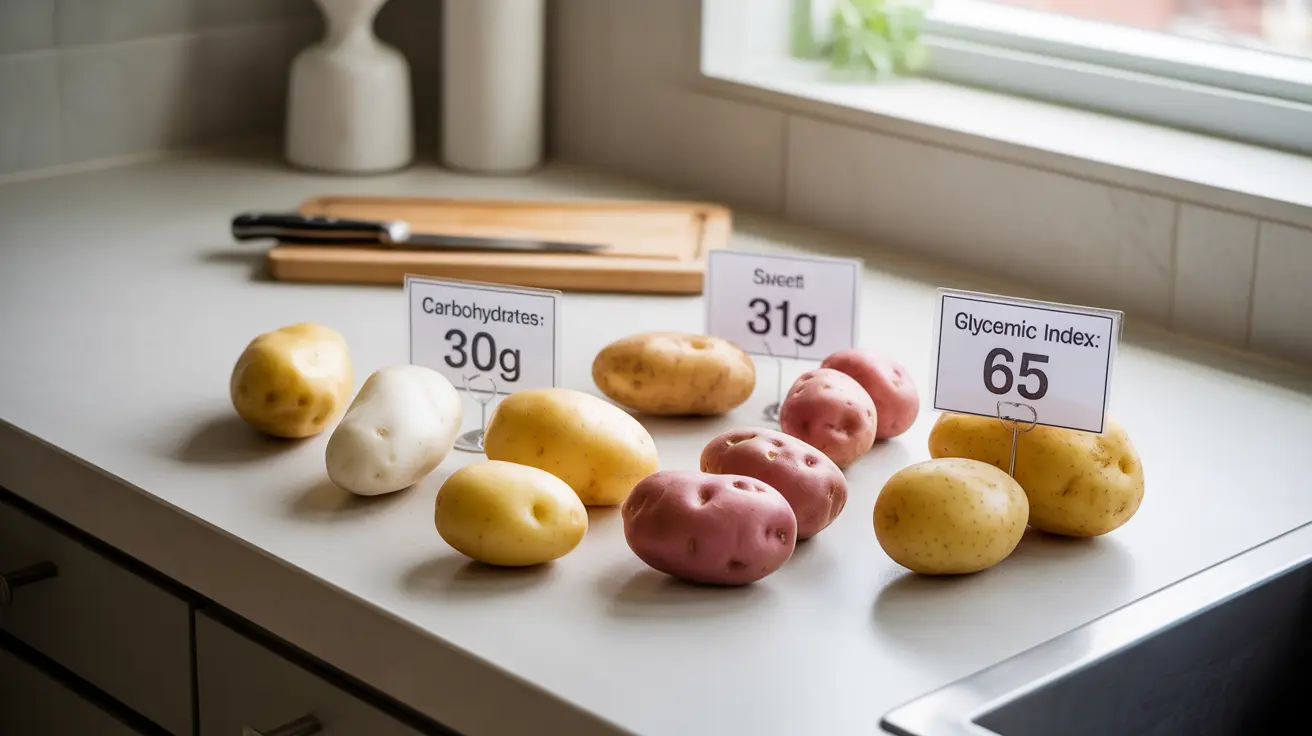Understanding the carbohydrate content in potatoes is crucial, especially for people managing blood sugar levels or following specific dietary plans. While potatoes are a nutritious whole food, their carbohydrate content and glycemic impact deserve careful consideration.
This comprehensive guide explores potato carbohydrates, their effects on blood sugar, and smart ways to include potatoes in a balanced diet, particularly for those with diabetes or blood sugar concerns.
Carbohydrate Content in Different Potato Types
Potatoes are indeed high in carbohydrates, with the specific amount varying by potato type and size. A medium-sized potato (about 5.3 ounces or 150 grams) typically contains:
- White potato: 37 grams of carbs
- Sweet potato: 24 grams of carbs
- Red potato: 34 grams of carbs
- Russet potato: 37 grams of carbs
These carbohydrates are primarily in the form of starch, with smaller amounts of fiber and natural sugars. The fiber content, while modest, helps slow digestion and provides additional nutritional benefits.
Blood Sugar Impact and Glycemic Index
Different potato varieties affect blood sugar levels differently, largely due to variations in their glycemic index (GI). Understanding these differences is essential for blood sugar management:
Glycemic Index by Potato Type
- Russet potatoes (baked): GI of 111
- Instant mashed potatoes: GI of 87
- Sweet potatoes: GI of 61
- New potatoes: GI of 57
The lower the glycemic index, the more gradual the impact on blood sugar levels. Sweet potatoes and new potatoes generally cause less dramatic blood sugar spikes compared to russet varieties.
Smart Preparation Methods for Better Blood Sugar Control
The way you prepare potatoes can significantly affect their impact on blood sugar levels. Consider these preparation techniques:
- Cooling after cooking (creates resistant starch)
- Leaving the skin on (adds fiber)
- Pairing with protein and healthy fats
- Using vinegar-based dressings
- Controlling portion sizes
These methods can help reduce the potato's glycemic impact and make them more suitable for blood sugar management.
Portion Control and Serving Suggestions
For those watching their carbohydrate intake, proper portion control is essential. A reasonable serving size is:
- 1/2 to 1 small potato (3-4 ounces)
- 1/2 cup of mashed potatoes
- 1 cup of diced potatoes
Combine these portions with non-starchy vegetables and lean proteins to create balanced meals that won't cause dramatic blood sugar fluctuations.
Frequently Asked Questions
Are potatoes high in carbs, and how much carbohydrate is in a typical potato?
Yes, potatoes are high in carbs. A typical medium potato (150g) contains 30-37 grams of carbohydrates, depending on the variety. This makes them a significant source of carbohydrates in the diet.
How does eating potatoes affect blood sugar, especially for people with diabetes?
Potatoes can cause blood sugar levels to rise quickly due to their high carbohydrate content and generally high glycemic index. People with diabetes should monitor portion sizes and consider preparation methods that lower the glycemic impact.
Which types of potatoes have the lowest glycemic index and are best for blood sugar control?
Sweet potatoes and new potatoes typically have lower glycemic indices compared to russet potatoes. Fingerling and red potatoes are also generally better options for blood sugar control.
What are some ways to prepare potatoes that help minimize blood sugar spikes?
Cooking and cooling potatoes, leaving the skin on, adding vinegar-based dressings, and pairing with protein and healthy fats can all help minimize blood sugar spikes. Avoid high-temperature cooking methods like deep frying.
Can people with diabetes still eat potatoes, and what portion sizes are recommended?
Yes, people with diabetes can eat potatoes in moderation. Recommended portions are 1/2 to 1 small potato per meal, or about 1/2 cup of mashed potatoes. Always monitor blood sugar response and adjust portions accordingly.




